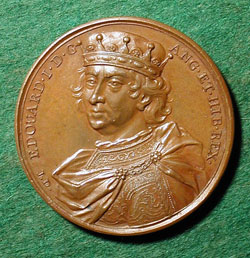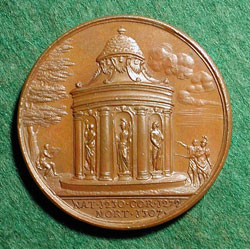

|
EDWARD I |
|
|
Edward I (1239-1307) (Edward Longshanks) was the son of Henry III. He reigned as King of England from 1272 to 1307, during a period of rising national consciousness. In 1254 he married Eleanor of Castile and in 1299 he married Margaret of France. His suppression of the Barons’ War led by Simon de Montfort, made him king in all but name. Edward joined the Ninth Crusade in 1270 and was crowned on his return. During the period of 1272 to 1284, he conquered Wales and incorporated it into England. In 1296 Edward invaded Scotland and captured the coronation stone from Scone. William Wallace and Robert I (The Bruce) led the Scottish resistance, ultimately foiling Edward’s attempt to subdue Scotland. Edward’s foreign ambitions led to the formation of the Model Parliament. His domestic reforms are central to Britain’s legal and constitutional history: the Statutes of Westminster codified Common Law, earning him the name of the "English Justinian". He was succeeded by his son Edward II. (O’ Brien) |
|